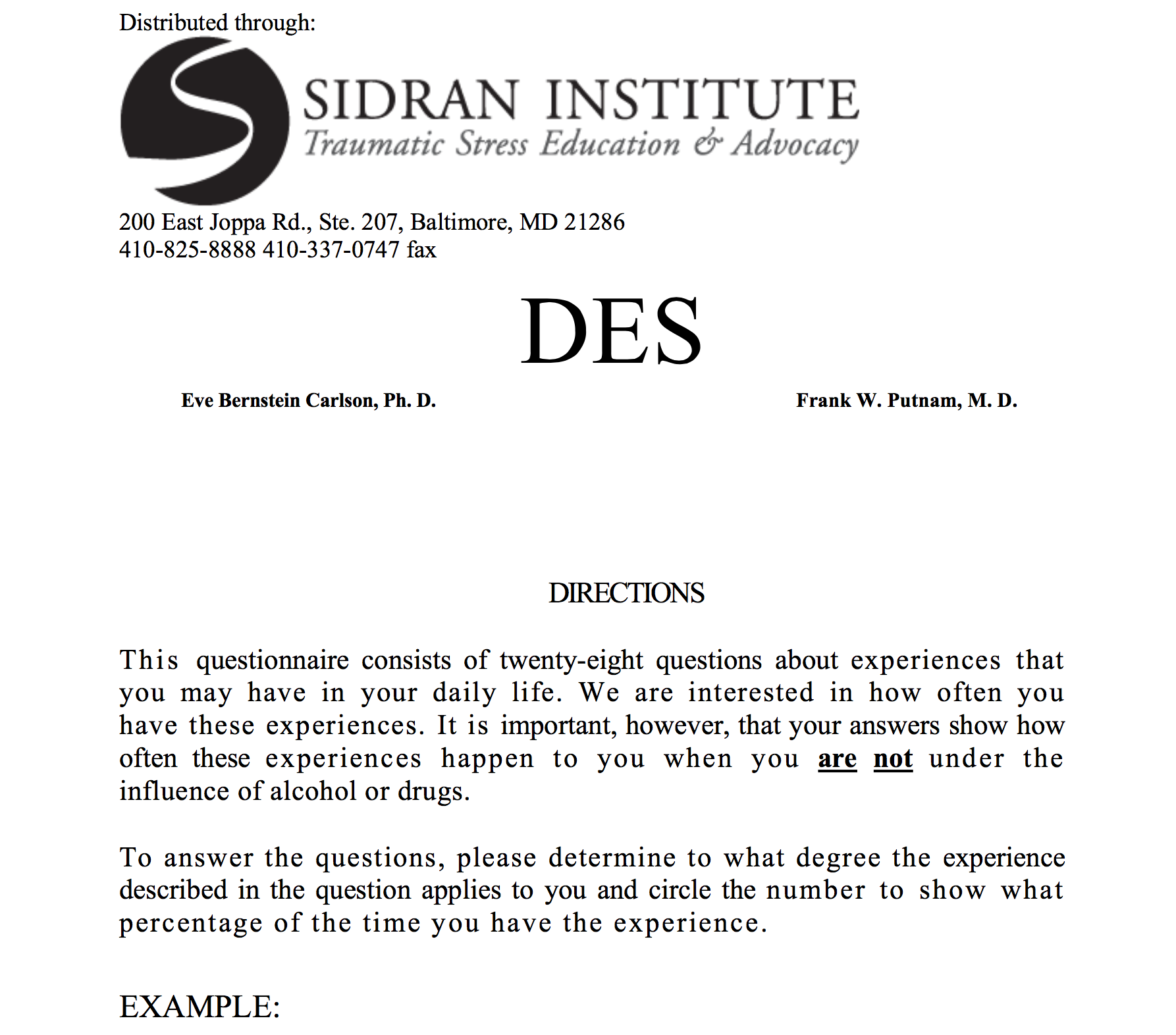 One of the assessment tools we use in EMDR is the Dissociative Experience Scale, or the DES as it is typically called. It has 28 questions that indicate that dissociation or “going away” mentally is likely happening by the client. Typical questions are:
One of the assessment tools we use in EMDR is the Dissociative Experience Scale, or the DES as it is typically called. It has 28 questions that indicate that dissociation or “going away” mentally is likely happening by the client. Typical questions are:
- Some people have the experience of driving or riding in a car or bus or subway and suddenly realizing that they don’t remember what has happened during all or part of the trip.
- Some people find that sometimes they are listening to someone talk and they suddenly realize that they did not hear part or all of what was said.
There are 28 questions. It is in the public domain so here is a copy in full: DES II .
Dissociation is an important issue with EMDR because of the way EMDR works at the neurobiological level. There are many ways to look at this, and it can become very technical and complicated, but suffice it to say that EMDR processing links up neural networks across internal neural boundaries, which is good in some cases but can be problematic in others.
Indeed, one of the main benefits of EMDR is that it links up the “maladaptive” neural networks to the “adaptive” neural networks, so that frozen or stuck memories can link up to new information and healing can take place. The downside is that these boundaries are put in place by the brain/mind mechanism to protect the “self” from being threatened or overwhelmed from the emotions of trauma that is stuck or frozen in the brain/neural nets, and if they are breeched or crossed too soon the result in emotional flooding or abreaction in the client depending on the severity of their dissociation and the rigidity of the boundaries.
This is to say that clients with single issue trauma, or primary dissociation are less likely to be emotionally overwhelmed than are clients with complex trauma. Complex trauma means, essentially that whatever happened was chronic, severe, instigated by humans – usually care givers – and that the mind has set up strong defenses in the brain to guard against feelings those resolved experiences.
In the training, “The Art of EMDR,” Kathleen Martin, LCSW gave the instruction that the best way to administer the DES is to read it to the client as part of a session. This is done in place of handing it to them and having them take it home and do it, or completing it in the waiting room prior to or after a session.
I sent her a follow up email asking was I correct in my understanding that the DES should be read to clients, and if so, why? This was her response:
“Yes, that is correct. It is not a good idea to give the test to them to complete on their own.
- The reason is it can trigger the person and you won’t be there to stabilize.
- Another reason is you can titrate the number of questions you ask to not overwhelm the client. You can ask a few questions in each session until you finish the full 28 questions.
- Another reason is you can ask for examples if a person scores high on a particular question which will give you some important clinical information.
- Another reason is it will give you a chance to see the body language and other non-verbals in response to the questions. The DES has a history of numerous false negatives. Watching the non-verbals can help you see if the behavior matches the answers or not.
When I thanked her for the response and acknowledge that it was more involved than I’d realized, she said, “Great. Treating trauma is complicated!”
Indeed, it is.
